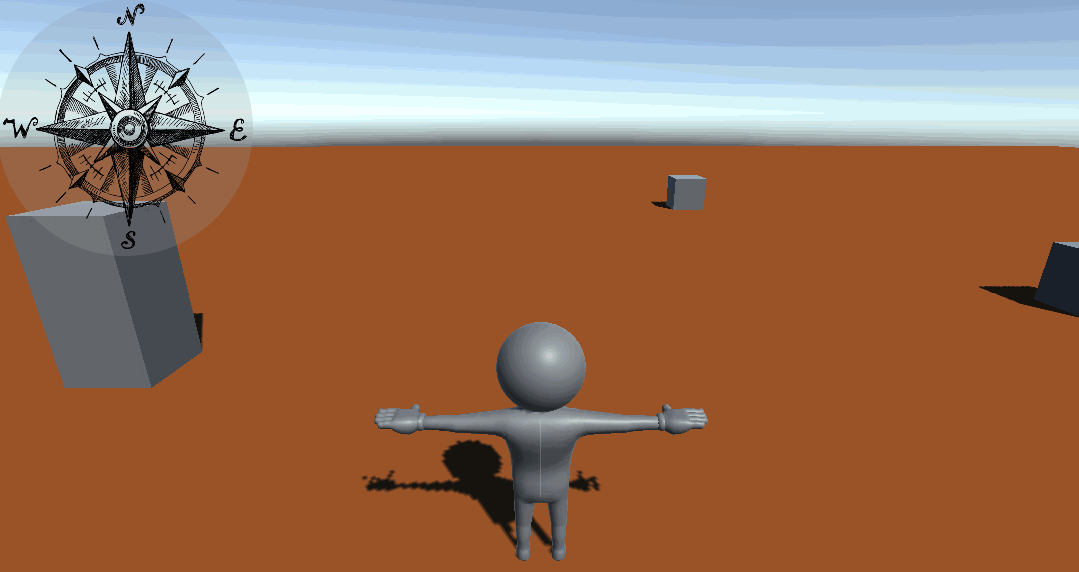Implementing an Overworld Compass in Unity
Published
When moving around in an expansive world in a game, there are 2 common solutions to help the player orientate: a minimap, or a compass.
In this article we’ll focus on implementing a compass, as it is simple and can feel much more authentic in a fantasy RPG than a full-blown minimap with objects and ennemies tracking.
You can also implement cool effects, such as making the Compass indicator spin like crazy to indicate treasure.
From Player Orientation to Cardinal Direction
A compass is a fairly simple tool: wherever the player might be looking towards, it will always point North. To do this, we’ll create a canvas and an image with a compass texture. Then we’ll rotate the compass image on its z-axis, according to changes in the player’s orientation.

Implementation
To do what we just described, we’ll create a Monobehaviour component that will transform the player’s forward into a rotation angle. If we consider North as being in the direction (0, 0, 1) in world space, then we can get the player’s forward, set the y value as 0, and normalize it.
By doing this, we can consider both points as being on a circle and use Mathf.Atan2 to get the angle by which we must rotate our sprite following the z-axis.
Then we’ll need to do a final adjustment: this angle calculation gives us the angle relative to the x-axis, so we need to add 90 degrees to set it relative to the z-axis.
This gives us the following code:
public class Compass : MonoBehaviour
{
public Transform mPlayerTransform;
[Tooltip("The direction towards which the compass points. Default for North is (0, 0, 1)")]
public Vector3 kReferenceVector = new Vector3(0, 0, 1);
// memalloc
private Vector3 _mTempVector;
private float _mTempAngle;
// Update is called once per frame
private void Update()
{
// get player transform, set y to 0 and normalize
_mTempVector = mPlayerTransform.forward;
_mTempVector.y = 0f;
_mTempVector = _mTempVector.normalized;
// get distance to reference, ensure y equals 0 and normalize
_mTempVector = _mTempVector - kReferenceVector;
_mTempVector.y = 0;
_mTempVector = _mTempVector.normalized;
// if the distance between the two vectors is 0, this causes an issue with angle computation afterwards
if (_mTempVector == Vector3.zero)
{
_mTempVector = new Vector3(1, 0, 0);
}
// compute the rotation angle in radians and adjust it
_mTempAngle = Mathf.Atan2(_mTempVector.x, _mTempVector.z);
_mTempAngle = (_mTempAngle * Mathf.Rad2Deg + 90f) * 2f;
// set rotation
transform.rotation = Quaternion.AngleAxis(_mTempAngle, kReferenceVector);
}
}